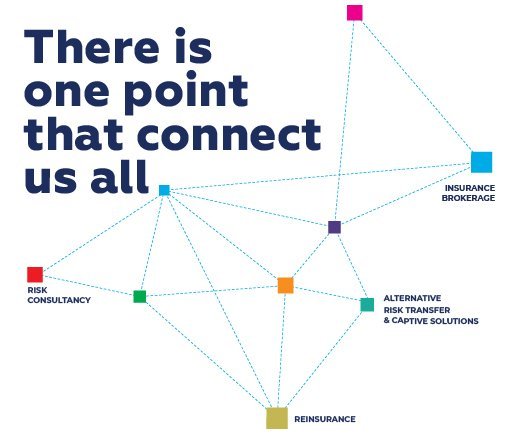Global Risk Perspectives - Monthly insights on geopolitics, trade & climate
Back to articlesAndré Figueiredo
23.03.2022
Embedded Insurance
Embedded insurance has become one of the hottest topics in our sector for distributors, insurers, emerging insurtech firms and venture capital firms, who see it as a potential revenue driver with high margins and high growth potential.
Put simply, the concept of embedded insurance means coverage or protection is offered in real time or at the point of sale sometime during the customer journey. When a vehicle rental company offers collision insurance through its website, or when you buy a new phone and the deal includes theft coverage, these are examples of embedded insurance or Insurance-as-a-Service (IaaS).
According to an InsTech report, the embedded insurance service should grow to 722 billion USD by 2030 — a six-fold increase. Such growth will be largely driven by China and North America which, in conjunction, will represent over two thirds of the global market share by 2030.
In effect, the Ping An Insurance Group in China is the largest embedded insurance provider in the world. Ping An has formed a vast array of platforms in sectors such as telemedicine, car sales, banking and real property, and integrated them into their insurance platform.
That’s why the future of insurance distribution lies with embedded insurance. A new, perfect form of insurance distribution is on the rise that brings more value to the market, to the benefit of all stakeholders.
Embedding insurance in the customer’s journey creates opportunities to grow the market. As the old adage goes: "Insurance isn’t bought, it is sold.” However, selling insurance isn’t easy. But when you buy insurance at the right time everything becomes clearer and simpler. To many customers the notion of purchasing a single insurance policy to cover a new asset may sound like a needless and cumbersome step. However, insurance embedded into product purchases allow customers to acquire protection through a kind of engagement that has no precedents and guarantees a perfect opportunity to offer relevant coverage at the exact moment the customer is most likely to realize the value of coverage.
In this light, new insurance categories could form. It’ll be good news for over 1.5 billion people who have no bank accounts. This may explain greater openness to trying out new embedded insurance products in markets where insurance penetration is low — India or Indonesia, for instance — because existing options simply do not serve the existing customer base. Embedding insurance and financial product is a way to lower the costs of servicing customers.
Customers’ lifestyles have also changed, leading to growth in the sharing economy. Fewer people own their own car, especially in larger cities, and they resort to short-term leases which incorporate insurance in the leasing contract.
At the same time, there now exists a panoply of modern digital platforms that can be integrated via API with distribution partners and third-party data sources. The largest technological ecosystems, like Amazon, Apple, Google and Alibaba, who gather services, markets and devices under a single umbrella of trust, will be especially powerful in the world of embedded insurance. These digital disruptors are well positioned to take advantage of this growing market as, if their digital business controls the customer, their customer’s data, trust, and communication, they are in an ideal place to embed insurance.
There is no doubt that people increasingly acquire services online and enjoy the convenience and simplicity of purchasing insurance as complements to other purchases.
But the transition to embedded insurance is not merely a simple switch to a different distribution channels. Many things need to change.
Embedding insurance requires a simple product supported by clear explanations. Descriptions must be written out in plain language, rather than complex legal jargon. And products must set exclusions aside to become more accessible and foster more customer confidence.
Embedded insurance also leads us to rethink claims. Consider, say, insurance solutions connected with parametric events, where a given, easily measurable event triggers the policy. It obviates discussion and, as a result, may lead to pay-outs of 100%. For example, a parametric weather insurance policy that compensates the insured based on events, or a screen protection policy for phones that triggers a pay-out based on the phone’s internal sensors.
One can quickly understand some policies are easier to embed than others. Products requiring more detailed underwriting (such as life insurance, where health and behaviour factor into the underwriting), or those who demand understanding of the customer’s behaviours (for example, cyber insurance, where customers play a key role in preventative measures), or where multiple exclusions exist, may be more challenging to embed.
Although not all kinds of insurance can be embedded, consumers’ growing appetite for more complex online shopping suggests that the market may evolve to cover risk in more demanding specialties over the coming years. Distributors and MGAs willing to invest time and resources on embedded insurance will reap their rewards as the market grows.
By André Figueiredo, Head of Retail, MDS Portugal



